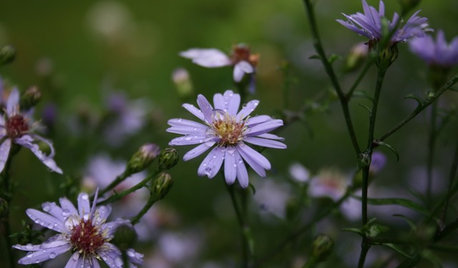sandy soil...Harding into cracking soil
jijack
10 years ago
Related Stories

GARDENING GUIDESHow to Stop Worrying and Start Loving Clay Soil
Clay has many more benefits than you might imagine
Full Story
GARDENING GUIDESHow to Pick a Mulch — and Why Your Soil Wants It
There's more to topdressing than shredded wood. Learn about mulch types, costs and design considerations here
Full Story
GARDENING GUIDESGet the Dirt on Your Garden’s Soil
Understand how your soil supports your plants so you can ensure your garden’s success
Full Story
CONCRETEWhy Concrete Wants to Crack
We look at the reasons concrete has a tendency to crack — and what you can do to help control it
Full Story
GARDENING GUIDES6 Native Ground Covers for Tough, Dry Spots
Sun beating down on your sandy gravel? Thick shade darkening your clay soil? There’s a ground cover here for you
Full Story
FLOWERS6 Overlooked Asters for Tough Spots
Whether your garden has baking sun or dry dense shade, boggy soil or sandy gravel, there's an aster for that
Full Story
LIFEHard Winter? 9 Ways to Battle Cabin Fever
We know a lot of you are trapped where it just won’t stop snowing. Here are some ways to survive
Full Story
GARDENING GUIDESNew Ways to Think About All That Mulch in the Garden
Before you go making a mountain out of a mulch hill, learn the facts about what your plants and soil really want
Full Story
GARDENING GUIDESGarden Myths to Debunk as You Dig This Fall and Rest Over Winter
Termites hate wood mulch, don’t amend soil for trees, avoid gravel in planters — and more nuggets of garden wisdom
Full Story
GARDENING GUIDESGet on a Composting Kick (Hello, Free Fertilizer!)
Quit shelling out for pricey substitutes that aren’t even as good. Here’s how to give your soil the best while lightening your trash load
Full StoryMore Discussions






cearbhaill (zone 6b Eastern Kentucky)
Tiffany, purpleinopp Z8b Opp, AL
Related Professionals
Belmont Landscape Architects & Landscape Designers · Westwood Landscape Contractors · Bridgeview Landscape Contractors · Damascus Landscape Contractors · Englewood Landscape Contractors · Gloucester Landscape Contractors · Kettering Landscape Contractors · Pikesville Landscape Contractors · Silver Firs Landscape Contractors · Golden Valley Landscape Contractors · Baltimore Window Contractors · Lauderhill Window Contractors · Orange County Window Contractors · Ruskin Window Contractors · Tamalpais-Homestead Valley Window ContractorsjijackOriginal Author
Tiffany, purpleinopp Z8b Opp, AL